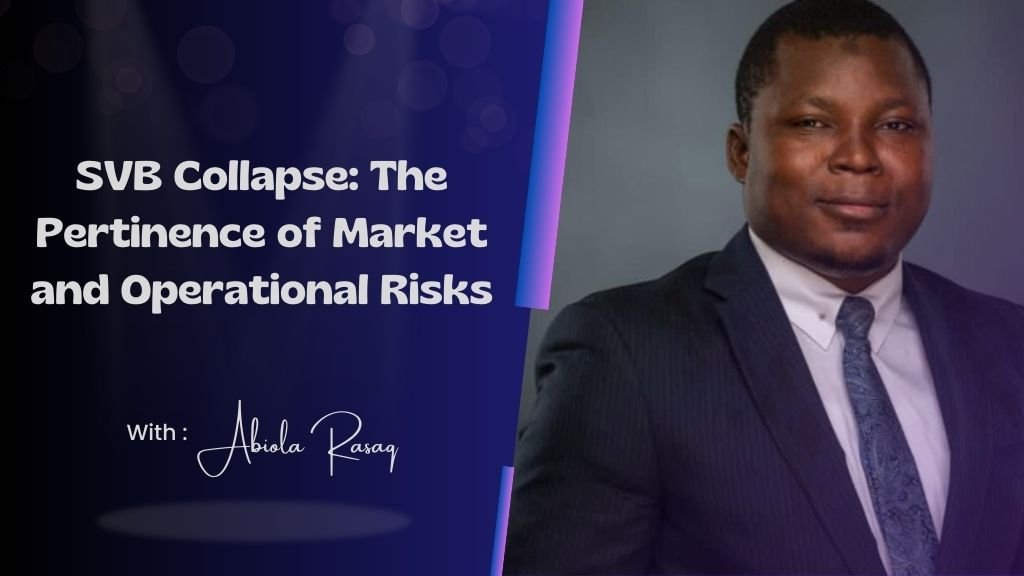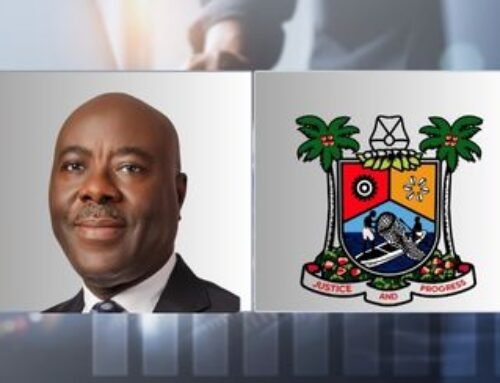
Finance expert, Mr. Abiola Rasaq, in his interview with DataPro Limited, discusses issues surrounding the failure of SVB and lessons for Nigerian banks.
What, in your opinion, is the most significant issue that led to the collapse of SVB?
The collapse of Silicon Valley Bank exposes the weak risk management of most financial institutions, especially banks, which are perhaps the most vulnerable to market risk. As financial intermediaries, interest earning assets and interest-bearing liabilities form the core of banks’ balance sheets and reflect the dire need for proactive and effective asset-liability management. While the failure of SVB stems from the late recognition of the steep rise in interest rate risks in its treasury portfolio and the need to hedge the risk against a rising interest rate environment, the wrong market perception from its stakeholder engagement was the camel that broke the back. Notably, not only did the capital raising effort send the wrong signal to the market, but its communication exacerbated investors’ concerns and, by extension, deflated customers’ confidence in the bank’s liquidity, which quickly mutated into a solvency concern among the broader stakeholders.
It was obvious the bank was not paying attention to prudential and regulatory issues: Where were the supervisory agencies in all this?
SVB had strong capital and liquidity ratios. Indeed, it had almost two-thirds of its assets in cash and fixed income securities, mainly U.S. Treasury bonds and agency bonds issued by government sponsored enterprises. It had barely about 35% of its assets in loans, perhaps one of the lowest loan-to-total asset ratios amongst the top-20 banks in the United States and indeed low by any global standard. The capital ratio of 16.1% is well above the regulatory minimum of 10.5%, as is the Tier-1 leverage ratio of 7.9%, which is almost twice the regulatory threshold of 4%. So, while regulators could have been proactive in stress-testing the balance sheet for extreme situations, it would have been difficult to presume the failure of SVB, just based on regulatory ratios. Again, this was a bank that had a seemingly healthy balance sheet, in terms of asset quality and liquidity, but oftentimes neither banks’ management nor regulators stress tested the health of institutions to extreme market and operational risk events such as the realities faced by SVB. Most resources are often dedicated to credit risk; however, this event has come to reinforce the pertinence of market and operational risks to the health of banks.
Some have blamed poor Corporate Governance issues for the collapse. What gaps were left unchecked, in your opinion?
There is a thin line between management failure and governance, as it can be said that the Board has overall oversight of the institution and indeed should have guided management to be more proactive, as may be required. That said, the failure of SVB was not the usual governance lapse in the form of misappropriation, misrepresentation, or insider dealings, which are some of the common governance flaws. It was a case of institutional failure occasioned by weak risk management and, I would say, ineffective communication as well as stakeholder engagement. Management got the timing and communication of the capital raising wrong, inadvertently sending the wrong message to the market. So, it was a problem that they relied on the presumption of investing in “risk-free” treasury notes, without hedging the inherent interest rate risk, but the bigger problem was that the actions taken to remediate the situation caused panic instead of mitigating the problem from getting out of hand. Of course, in finance, expectations dictate confidence, and that determines everything.
The Asset- Liability Management Practices in the Bank have also been called into question. What, in your opinion, went wrong?
First, it is unfortunate that while banks are financial intermediaries, which means asset-liability management is at the heart of their core existence, very limited resources are often dedicated to it. One aspect of ALM is the inherent duration mismatch in banks portfolios, as they take demand deposits to fund long duration assets. The mismatch is not wrong in itself, given the realities of the market, but the failure to recognise and actively manage it is the bigger risk seen across most banks. Many a time, banks, especially the big retail banks, just expect that deposits will be sticky, and the expectation is that while the probability of withdrawal may be high for each customer, the probability of a run is presumed infinitesimal because the diversification of the pool is expected to remain a natural hedge against a run.
It seems external factors such as Government policies and actions play a significant role in the soundness and stability of Banks: How can banking operators mitigate against unfavorable Government policies to avoid failure?
Monetary as well as fiscal policies have strong implications for businesses. To this end, the management of companies, especially financial institutions, is expected to actively manage exposures to policy risks, including macro vulnerabilities. Banks have multi-dimensional exposures to macro risks, given their financial intermediation role. Thus, banks are expected to always be proactive in anticipating key systemic risks that can have a direct impact on their business, as well as the indirect exposures they have through their customers across multiple sectors of the economy. Indeed, banks are expected to play thought leadership roles, by supporting their customers through their financial lifecycle, which may also help mitigate the indirect risks that may arise from their customers’ financial failures.
What lessons do you think Nigerian banks can learn from the collapse?
Nigerian banks are not completely immune to the collapse of SVB. While I do not expect any Nigerian bank to have direct exposure to SVB, it is instructive to say that the turmoil in the global financial market, including the sell-off of Credit Suisse, would reduce capital flows, especially to emerging markets like Nigeria. I expect international banks to reduce lines of credit to Nigerian banks, and it is becoming increasingly difficult for any Nigerian bank to access the international debt market, including the loan market. More importantly, the interest rate risk that crystalised at SVB is inherent in Nigerian banks. Notably, yields on Nigerian bonds are twice the level they were two years ago, and this suggests that banks are sitting on notable unrealised losses from these securities. We have had this situation in the past in Nigeria, and banks currently carry this inherent risk, with little or no attention to the implications, neither by the banks nor the regulators. Precisely, in 2010/11, most banks, if not all, had to reclassify most of the securities in their trading portfolio into held-to-maturity portfolios to avoid realising the market-to-market loss under the prudential guidelines and NGAAP (which was the Accounting standard for reporting at the time), and the same was done even after the transition to IFRS. This is why it is important to know what percentage of banks’ treasury portfolio is accounted for at amortised cost and to be sensitive to a market-to-market situation to reflect what the loss could potentially be if the securities were to be liquidated to generate cash to meet liquidity needs. As a first step, it is also important for investors as well as analysts to pay attention to the other comprehensive income sources. to also see if there are unrealised losses arising from the treasury securities fair valued through the OCI. This is important to see what impact this may have on capital ratios, liquidity, and the overall health of the institution. As a matter of fact, the stress test should include an evaluation of the foreign currency exposures of banks, especially with the increased level of dollarisation of banks’ balance sheets and the risk of Naira devaluation, which may have a notable impact on the overall profitability and balance sheet strength of banks.








Leave A Comment